This product is not exportable outside the United States.
By adding this item to cart, you agree and acknowledge the Export Policy and confirm that you are a person in the United States with no intentions to illegally export the device.
This product is not exportable outside the United States.
By adding this item to cart, you agree and acknowledge the Export Policy and confirm that you are a person in the United States with no intentions to illegally export the device.


0

0

The more important the goal of your mission, the more costly mistakes and neglect of trifles will cost you. You can hardly give a more correct and accurate example of this thesis than war. It is in a war that any little thing very quickly becomes fatal.
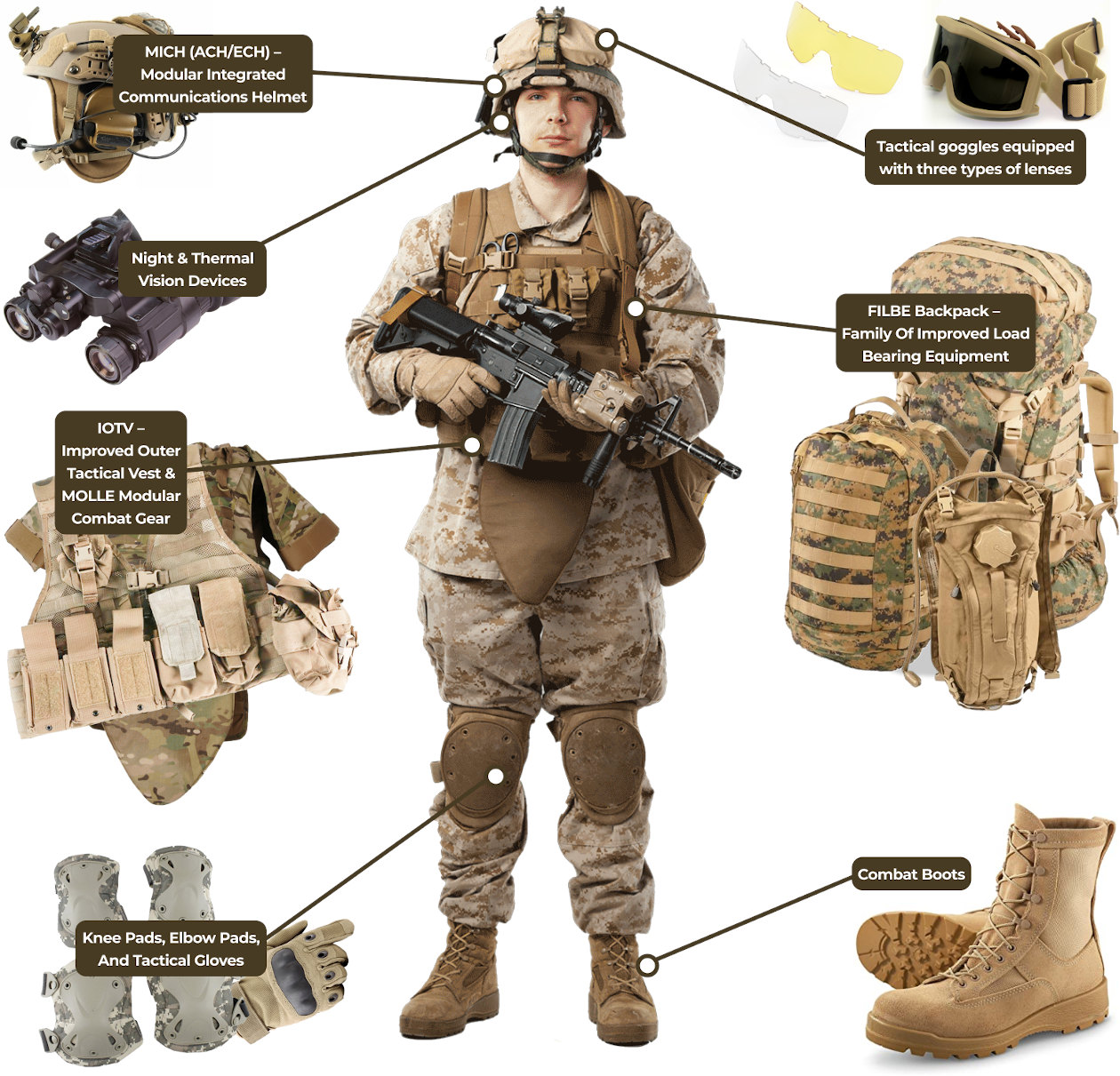
US soldier equipment
We understand this and, for this very reason, we have paid so much attention to not-so-significant, at first glance, elements of the equipment of an American soldier, such as uniform and camouflage. What relates to a soldier's outfit is not just a set of materials and devices created by designers to make a soldier look stylish. It is a symbiosis of materials, colors, and devices that combine the conclusions drawn over the long years of the existence of the American army. The only task of equipment was and remained the preservation of the life of an American soldier because it is our brave guys and girls who guard our democracy and the state that are the highest value.
Military experts from around the world rarely agree. But where they have an identical opinion is that the US Army is by far the strongest in existence today. This is determined not only by the quantity and quality of weapons and military equipment. Moreover, the central aspect of such an assessment is how the ordinary soldiers are provided. And, in this matter, we still have no equality.
In the last two parts of our conversation about the equipment of the US Army soldier, we focused on the most important things. We talked about all the stages of the evolution of the design of the form and the materials from which they were made. This long journey characterizes not only the current technology but also through a long journey of trial, error, and practical application on the battlefield. But also the general attitude of the command to the value of the only life of an ordinary soldier and his safety. The same statement is also true for the coloring of the uniform, which is designed to complicate the identification of a soldier on the battlefield.
All the endless funnels of the country's defense sector are aimed at only one goal: to increase the country's defense capability. And, what gives us pride and confidence is that the price for increasing the combat readiness of the army has never been the life of an ordinary soldier. After reading today's article, you will be convinced of this again.
It is unlikely that something can characterize the policy of the American state in the field of military representation of the state in the world and its attitude towards the personnel of the army, like The Sole Survivor Policy. Even if you have never heard the name of this principle, you are familiar with it. All this thanks to Steven Spielberg and his movie Save private Ryan. This delightful and inspiring story turns out to have a solid historical foundation and legislative origins.
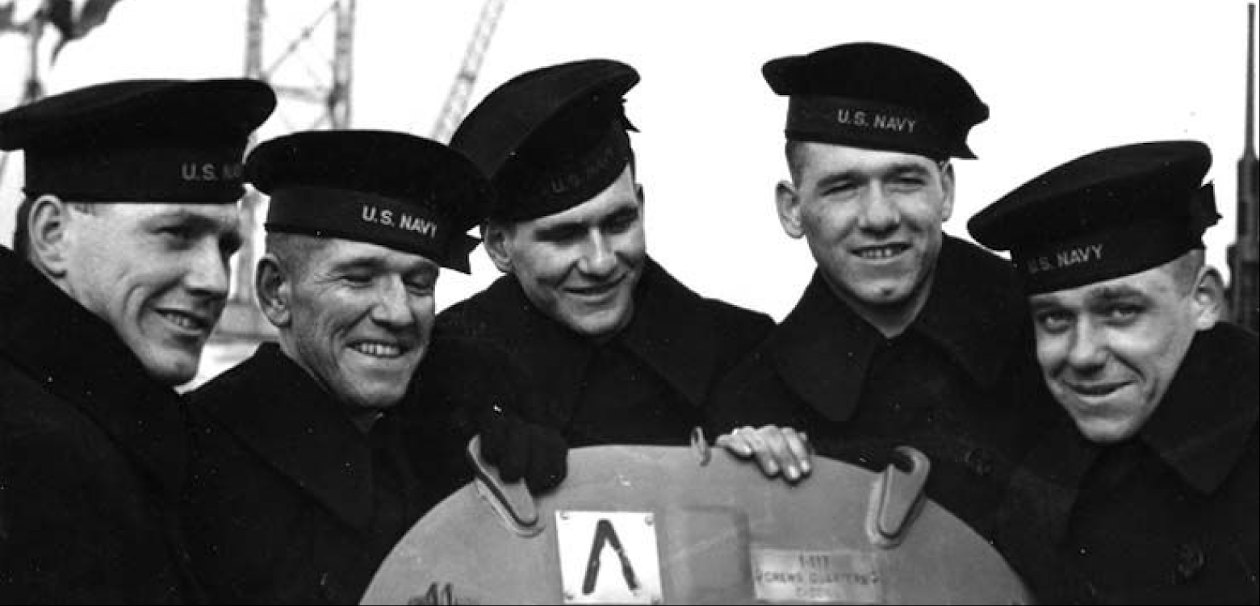
The Sullivan brothers on board USS Juneau: Joe, Frank, Al, Matt, and George.
During World War II, The Sole Survivor Policy was the US Department of Defense's response to a personal tragedy for the Sullivan family. Five brothers from this family served on the USS Juneau and died at the same time when it was sunk. After that, the army leadership decided to neutralize the possibility of repeating such personal disasters. Since then, relatives from the same family were assigned to different military units so that the likelihood of losing everyone at one time was excluded. Moreover, if one of the brothers or close family members died, the second was sent home so that the blow to the family from the war would not be so fatal.
Why are we talking about this? Not only because we are genuinely proud of the humanism and attention that the state has shown and continues to show towards ordinary US citizens. Such concern seems even more significant and touching against the background of other states, especially the period of warfare in the mid-20th century.
For example, the USSR, which tried to wage the Cold War with the United States and keep the pace set by them in the arms race. The communists collapsed under the weight of their savagery, inhumanity, and barbarity. The most striking example of their politics and military paradigm was the price of victory in World War II. They just filled the Nazis with the corpses of their soldiers. And this trend continued until the very end of the state. The actual military talent of the same Marshal Zhukov manifested itself in the Korean campaign when he, commanding attacking North Korea and having all the trump cards in his hands, managed to lose the war. Russia continues the tradition of disdain for its soldiers and a primitive attitude towards its people.
It is the attitude towards our troops, and towards each soldier personally that forms our high-tech and advanced army. As you can see, this fact has deep historical roots. And it is confirmed by the present. Therefore, every guy or girl on the battlefield is equipped with the most up-to-date equipment that we will talk about now.
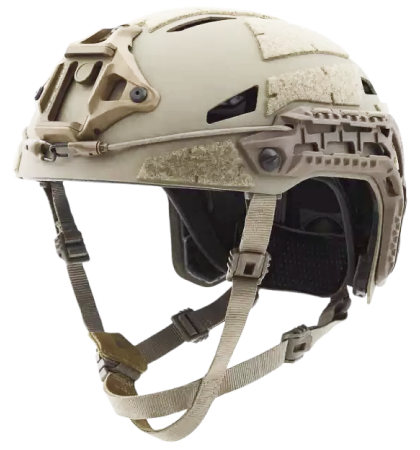
In considering the equipment of the US soldier, we will not be rating the importance of the equipment. Since each of its elements is essential and in the aggregate, they constitute the symbiosis that saves lives. Therefore, we will look at equipment from the top, from the head to the feet. And it just so happens that the first on this list will be one of the most critical elements designed to protect the lead.
There is no point in explaining why a durable and lightweight helmet is essential. This is obvious and understandable to everyone. Until recently, the only question was how to create it. In recent years, science and technology have made it possible to solve this problem. It is worth noting that the history of the use and improvement of army helmets is so voluminous and fascinating that it would be worthwhile to devote a separate article to it. But, today, we will focus on three main stages and three main types of helmets.
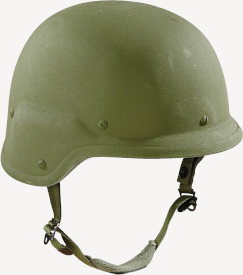
We highlight the first stage is the abandonment of the M1 helmet, made of steel and in service with the army since 1941. He, as well as ancient body armor, has been replaced by protective elements made of an innovative and durable armide fabric called Kevlar. Active replacement began in 1980.
As for helmets, at this time, the army received PASGT helmets, which stands for Personnel Armor System for Ground Troops. For its time, it was the quintessence of military, scientific progress. With a minimum weight of 4 lb, the helmet was very durable due to the multi-layer Kevlar used in the construction. It was completed with a cover of the same color pattern and was produced in five sizes. This helmet has become a reliable companion of our soldiers for thirty years and is still used, though only by auxiliary units of the army.
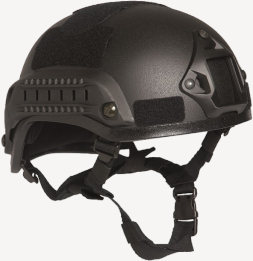
The success of the PASGT led to the creation of the Modular Integrated Communications Helmet and Lightweight Helmet, which actively replaced its predecessor in the mid-2000s. The successor to these helmets is the Advanced Combat Helmet (ACH). In the context of our conversation, it is not worth highlighting it separately since ACH became a logical continuation of MICH's ideas and improved its design using current Kevlar fabrics.
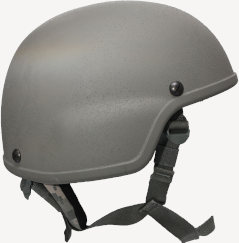
The second generation of the Advanced Combat Helmet, которое получило наименование ECH (Enhanced Combat Helmet) is in service with the US Army. These are reliable helmets, which are usually allocated in a separate iteration, that become lighter with each generation and provide the fighter with more and more protection through innovative materials and improvements. Modern head protection is practically not felt due to its low weight. It gives excellent visibility and reliably stops standard types of bullets.
In non-combat conditions, troops use simple headgear that matches the requirements in which the unit is located. It can be panamas, caps, and hats that correlate with the primary color of the camouflage.
Now the army is undergoing modernization, during which a transition to innovative helmets IHPS (Integrated Head Protection System) is envisaged.
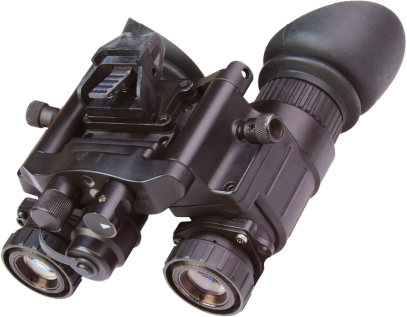
Since we are talking about helmets, we must also remember special optical devices often mounted on soldiers' helmets, such as night vision goggles.
These devices are worthy of special mention since one of the slogans of some units of the US Army, "We owe the night," appeared not without reason. The US Army has achieved tremendous success in developing night vision and thermal imaging technologies. The fantastic technological leap our scientists have made since the first use of primitive NV devices at the end of World War II is impressive. Today, the development of devices has been going on for four generations. And the latest generation is being actively tested in the army today.
It's hard to imagine, but the troops are now testing colored night vision devices. You read everything correctly. These devices display the picture not in green or white but in natural colors. This is just fantasy, which wasn't easy to believe ten years ago, but now it is reality.
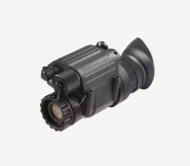
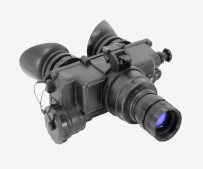
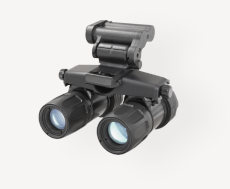
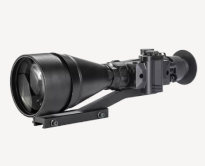
The army uses a full range of devices: monoculars, binoculars, fixed telescopes, and, of course, goggles. Each device has its pros and cons, and each is used under the right conditions. But, special attention should be paid to night vision goggles, which are often fixed on the helmet and allow the fighter to instantly switch to night vision mode, throwing them back into the working position with one movement.
Naturally, the army receives the most advanced and best examples of this optical technology. Their minimum weight and optimum ergonomics characterize them. It is the army that is the first to test unique technologies. It is after them that the devices enter the broad market.
In other conditions, each fighter has tactical goggles equipped with three types of lenses and allow not only to protect vulnerable eyes but also to act effectively in any, even the most adverse conditions. Responsible for this are lenses specialized for windy weather, sandstorms, and sun protection.
This is the thing that is designed to protect the soldier in a pinch when the enemy's bullet has already been fired, and it remains to rely only on God's mercy and the reliability of the equipment. But, at the same time, one should not exaggerate the role of this piece of equipment. Standard body armor does not protect against all possible calibers and types of weapons.
The bulletproof vest of a fighter of the US Army often consists of several parts. In addition to the central part that covers the chest has removable elements that cover the neck, limbs, and groin area. The first versions, reminiscent of today's vests, appeared after the Second World War, which taught humanity a harsh lesson. First of all, this lesson concerned the fragility of human life and the need to protect it at all costs.
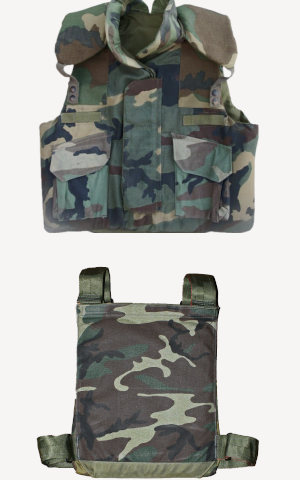
In 1941, the helmet was adopted, which became the basis for the PASGT (Personnel Armor System for Ground Troops) equipment system. Bulletproof vests, which later formed part of the fighters' equipment, were actively developed and improved over the next forty years. The 70s were the critical decade for this process. This was facilitated by the active development of technologies, particularly Kevlar, and the vast amount of data obtained during the Vietnam campaign. As a result, in 1981, the army received a modern, lightweight, and much-needed vest.
The PASGT turned out to be a very successful invention, and it remained relevant until the 90s. Naturally, all this time, body armor has been constantly improved to protect against new bullets and fragmentation weapons. The flip side of this process was the steady increase in the weight of the protection system, which reached 30 pounds in the 90s. This version of protection is called ISAPO. Despite good tactical and technical indicators, this system disappointed the military, again, because of the prohibitively high weight—the need for significant improvements in equipment.
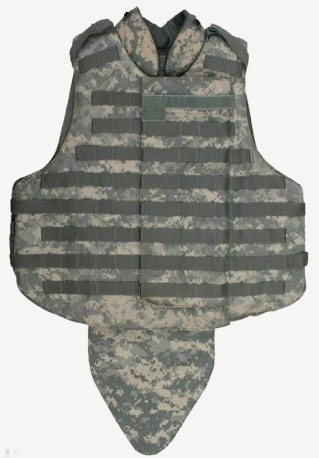
The answer to this challenge followed in 1999 with introducing the Interceptor Body Armor (IBA) system. As part of this system, the army received an OTV (Outer Tactical Vest) body armor equipped with SAPI ceramic plates (ESAPI) and a complete set of additional protection.
Let's face it. This armor set turned out to be unsuccessful. The body armor protection had several fatal shortcomings, and they manifested themselves directly in the design and ergonomics elements. It is worth paying tribute to the engineers and developers of Interceptor. They carefully studied statistics and promptly responded to the discovered shortcomings.
On the other hand, all the improvements, in the end, came down to one thing - the addition of additional armored elements. Logically, this approach led to a significant increase in the weight of the armor system. Rapid and ill-conceived acquisitions of protection elements led to a catastrophic decrease in ergonomics. The soldiers did not put on the complete set for combat operations, as it constrained movement and made the weight heavier. As a result, we were faced with a paradox: either not to put on a set of armor and have a chance to die from design flaws, or put on the entire set and die from low mobility. Of course, this is a very rough comparison, but hopefully, we have explained the OTV problem.
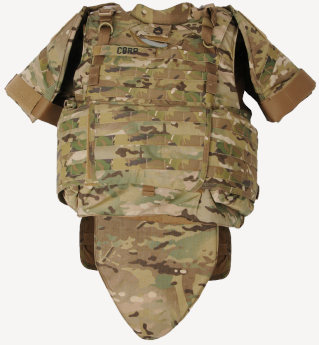
We must pay tribute to our army, so it is that it can quickly learn from its mistakes. When the shortcomings of the previous iteration of protection systems became apparent, conclusions were drawn very quickly. At the end of 2007, the troops began to receive a new body armor IOTV (Improved Outer Tactical Vest). This model turned out to be highly successful from the point of view of protection and an economic point of view. It was compatible with IBA security elements. In addition, he eliminated one of the most significant shortcomings of the previous generation - the protection of the shoulder area. DAPS (Deltoid and Axillary Protector System) was responsible for this, a system that appeared in the last stages of the Interceptor refinement. Thanks to successful engineering solutions, this solution was seamlessly combined with the new body armor model.
Overall, one of the greatest strengths of IOTV is its versatility. The main achievement of this vest is its organic compatibility with all the best inventions and modifications of the previous iterations, including ESAPI and SAPI composite ceramic armor panels and ESBI S-SAPI side plates.
There is no doubt that this model is currently the best personal protective equipment for a US Army soldier. But, the main thing that pleases us is that looking back at the history of the development of body armor, we can be sure that our scientists follow modern trends and will introduce innovations in the design of armor as soon as possible.
When talking about the equipment of an American soldier, it is impossible not to recall the elements that allow a soldier to store and move personal items and small parts of equipment designed to perform combat missions. As you can imagine, this equipment is essential, as it should allow you to take everything you need with you while allowing the fighter to remain mobile.
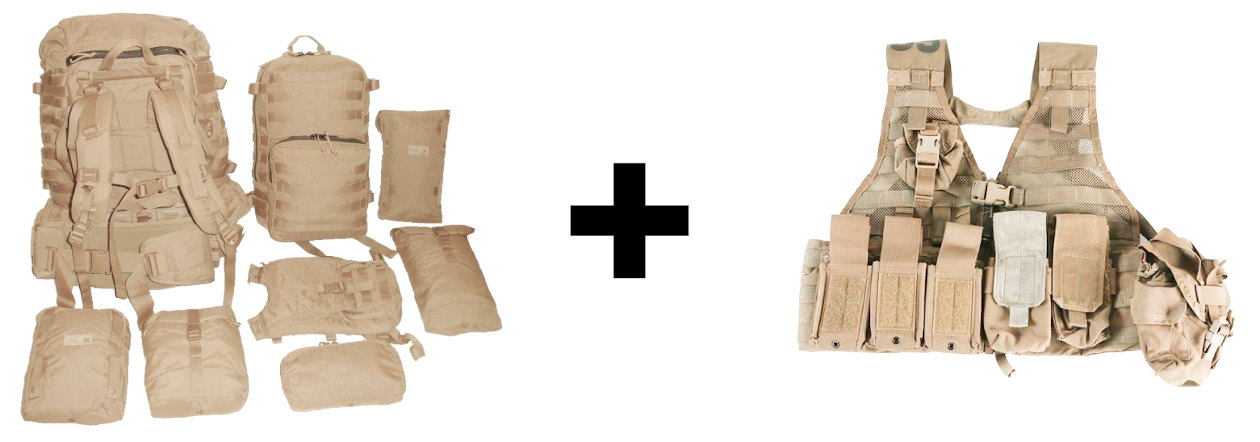
MOLLE modular combat gear is responsible for solving this challenging task in the American army. Today, second-generation MOLLE equipment is relevant for combat units. It consists of a tactical vest and a backpack.
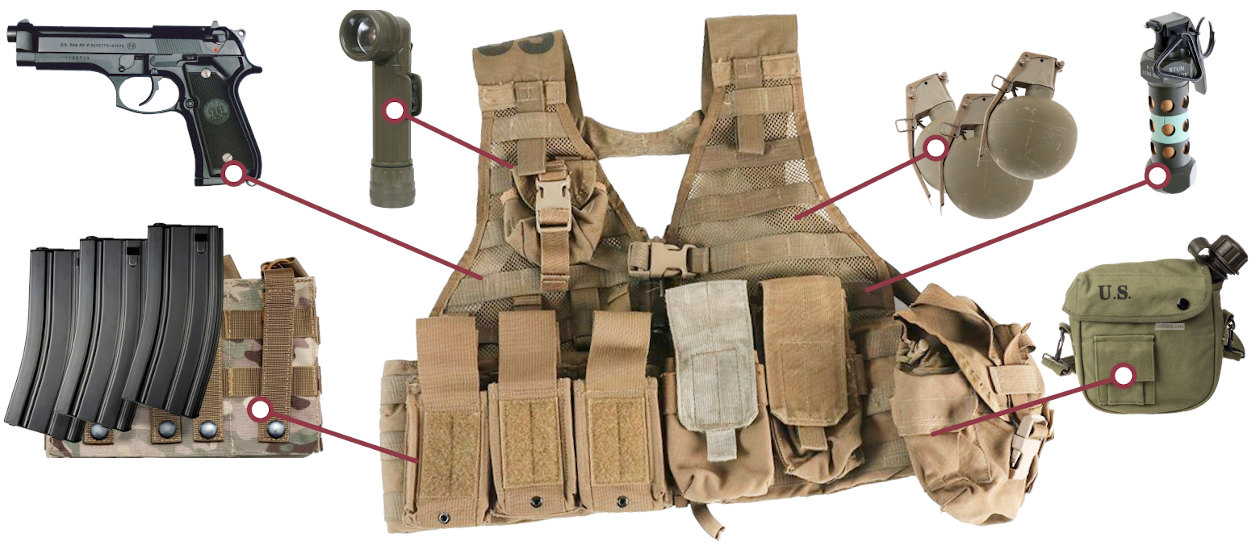
The unloading vest is combined with a waist belt. It contains compartments for storing additional personal weapons, a tactical flashlight, a canteen, spare clips for primary weapons, pouches, offensive and flash grenades, a compact set of tools, etc. The design of these clothing items is as light and comfortable as possible, allows you to personalize the location of the equipment, and has a particular system that will enable you to remove it if necessary quickly.
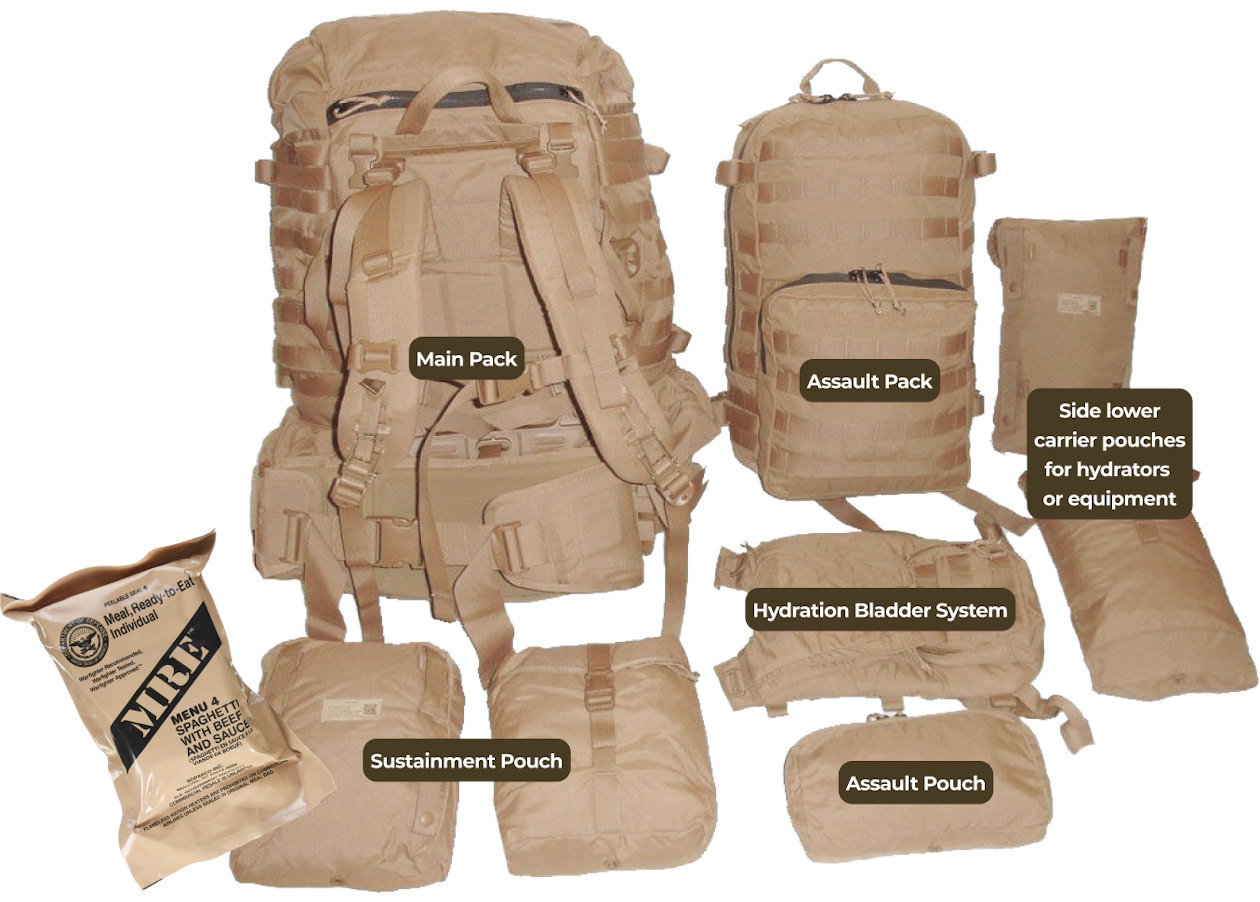
USMC FILBE
The backpack accommodates oversized cargo, including an MRE food ration. In the standard outfit of a soldier, everything is placed in the backpack, including clothing. Depending on the objectives of the raid and the time of year, it can be packed with a removable camouflage, sports uniform, a reflective belt, extra socks, removable shoes, a poncho, an assault-pack, a raincoat, a sleeping bag, and even a notebook with a pen, and a combat tutorial. The backpack also contains a three-liter Camelback dehydration system and dry rations.
Let's take a closer look at some of the elements. For example, MSBS is a sleeping bag made of modules. It is packed in a unique bag, designed for cold and warm weather, and has a special mat to keep warm.
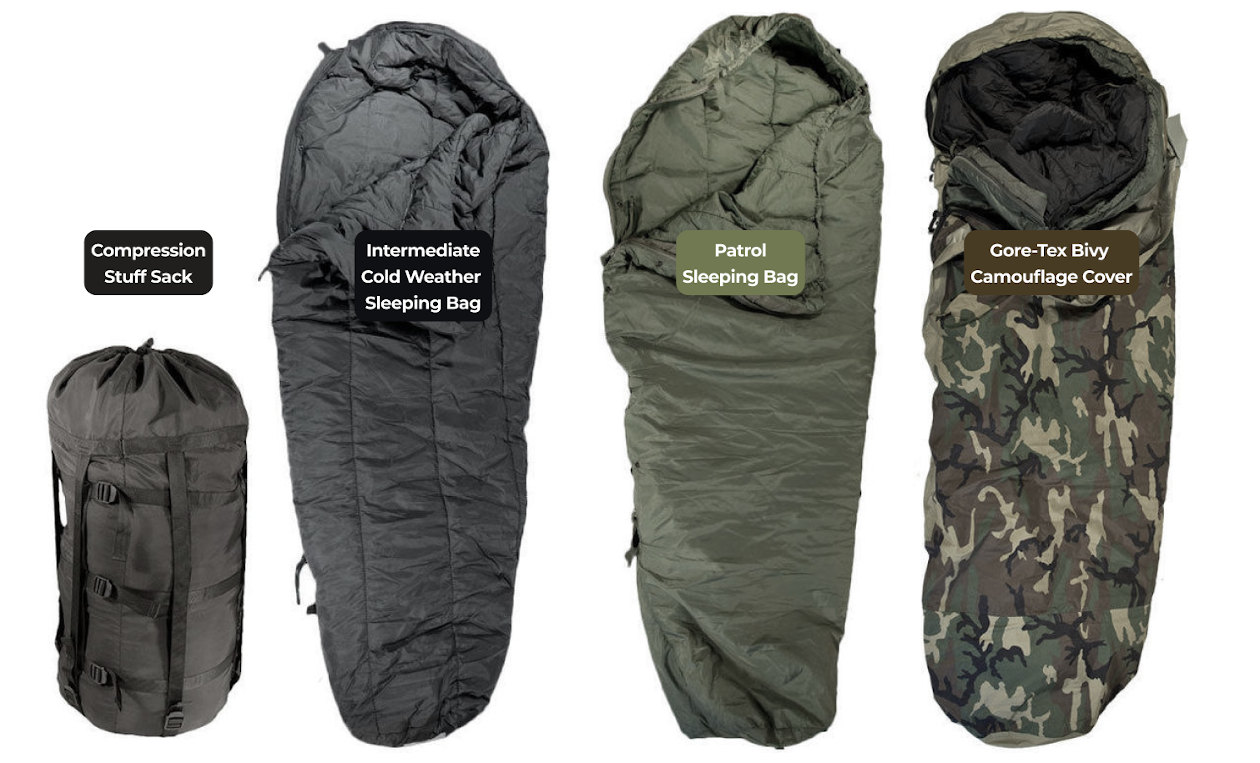
MSBS sleeping bag
The power supply system in the field, considered the best in the world, deserves a separate discussion. Like any other element of the equipment of an American fighter, dry rations are constantly being improved and changed. The basis for the current nutrition system remains the MRE food ration, developed in the 80s of the twentieth century. This food underwent a massive renovation in 1993 when 14 components were removed from it that was not popular with fighters. At the same time, more than 70 new products were included. At the same time, the menu was expanded, and even four options for vegetarians appeared. The weight of the solder is only less than 2 lbs. At the same time, the food has an incredible shelf life. So, within half a year, it remains completely intact, and up to three years, it has a freshness of 80 percent. The amazing facts about the diet of the typical American soldier do not end there. This topic deserves a separate, long article.
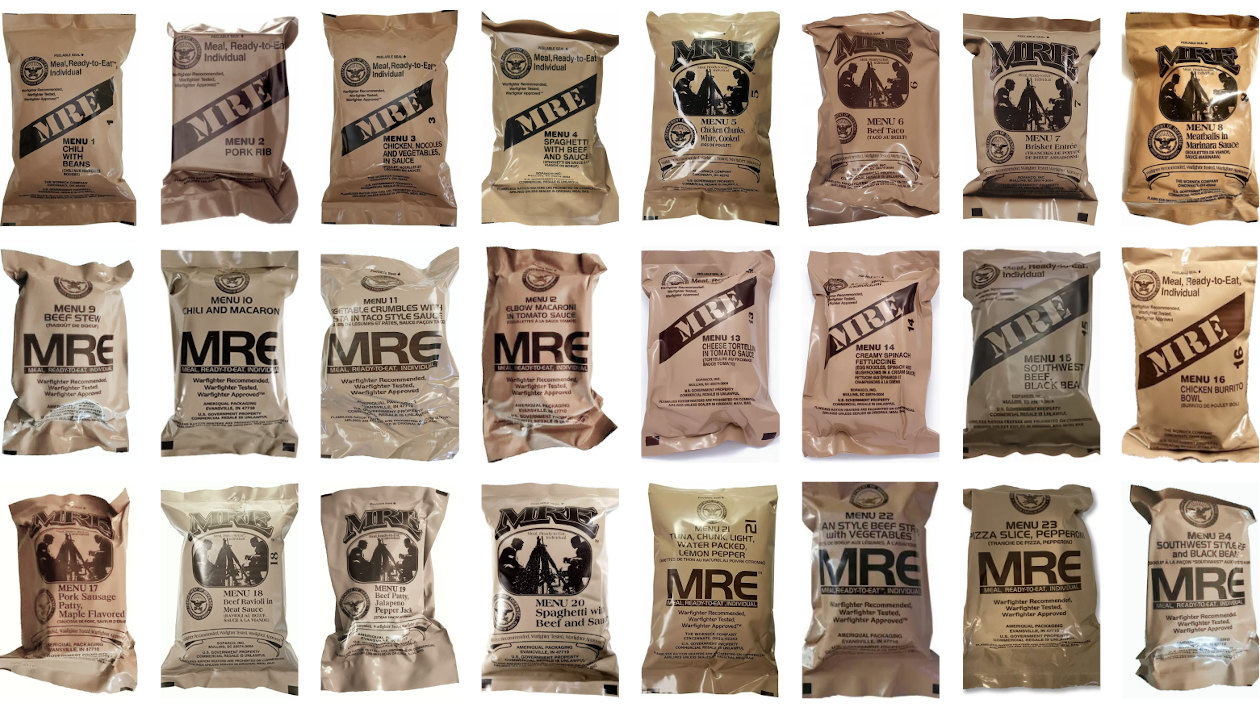
All MRE menu
The backpack and unloading equipment contains everything a fighter needs and even a little more. At the same time, their weight is a good 35 lbs.
It is only natural that communication between units and individual fighters is essential, if not the most critical of modern warfare. Communication shortens order generation and execution time, saves lives and speeds up information transfer.
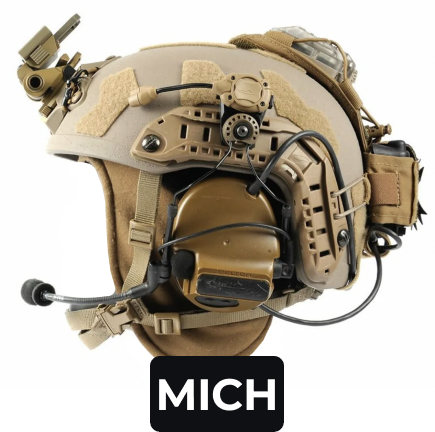
Modular Integrated Communications Helmet
Do you know how vital communication is? The lack of quick and effective communication and the transmission of orders caused France's inglorious defeat in World War II. The French did not consider this direction of technology influential in military affairs and left communication at the level of the Great War. Therefore, when they were attacked by the German army, inferior in the number of infantry and equipment, this aspect became the main one. France did not last even a month, and we all know the jokes about French tanks with five reverse gears.
The US Army has never made such mistakes. Therefore, every soldier has a MICH at his disposal - light and modern communication system at short distances. The range of the system is 700 meters. It is incredibly light and links the combat unit together.
Do not assume that this is the only means of communication among the troops. We have considered only the most common system designed for ground forces. The variations in the means of communication in the army are enormous. They include both the latest technological methods and specific local ones.
Also, digital systems are now being actively tested, which visualize essential information in front of the fighter's eyes. Augmented systems are also being developed and are being used in the troops. The ideal communication system of the near future will combine all the information needs of a soldier. And it will become a kind of universal tool, provided with encrypted protection and improved communication and positioning systems.
We have combined these equipment items into one item for the simple reason that they are similar in functionality and meaning. All these things are aimed at protecting the soldier's limbs and allowing him to be much more effective because they neutralize the nuances of the terrain with which to interact with the terrain.
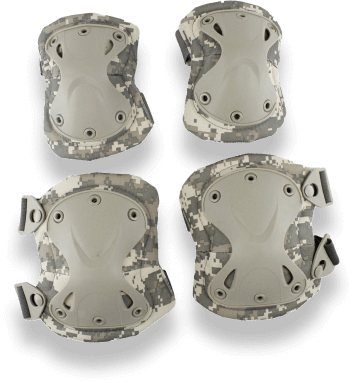
Knee pads and elbow pads are similar in design and technical performance. They protect the knees from undue stress when shooting from a mid-position and moving, especially in rocky terrain. Both protectors are crafted from high-density polyethylene shells, which are quick on and off thanks to durable straps. The cushions of three segments, created from foamy polyethylene, allow us to cushion external influences, and the weight is so insignificant that we will not even dwell on this aspect.
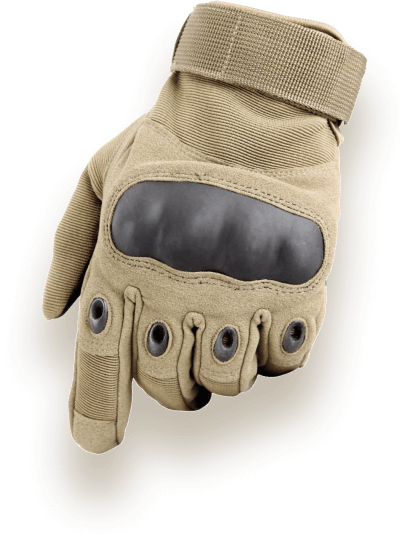
Gloves are a more specific piece of equipment. They are faced with several tasks. They need to be warm in cold weather and provide a comfortable temperature when hot. They must protect the hand from unexpected injuries and stupidity. For example, when you decide to touch the muzzle of a machine gun after shooting.
Army gloves meet these challenges and are made from materials that provide a good grip and maintain natural dexterity. They do not get wet, do not melt, and have increased adhesion due to the use of a two-layer fabric. Also, this item of equipment has damper pads on the outer part, providing additional protection to the joints of the fingers and the back of the hand. In addition, they offer the ability to cut the fabric on the fingers, which is sometimes essential, for example, for snipers.
So we got to the most crucial topic - army boots. A thing that is responsible for how comfortable, which means how quickly and efficiently the fighter will move. You can provide the soldier with luxurious food and the best weapons, but all this will not matter if his boots are rubbed. The US Army knows this better than anyone.
During the war, all the shortcomings of the footwear, which were made of tarpaulin and leather, but were not adapted for combat, were quickly revealed. Therefore, after the Second World War, the correct conclusions were drawn. There have been several significant changes in this short period, and the shoes have evolved from a leather sole to a rubber sole. At the same time, the main priority was established: to create a versatile and reliable shoe.
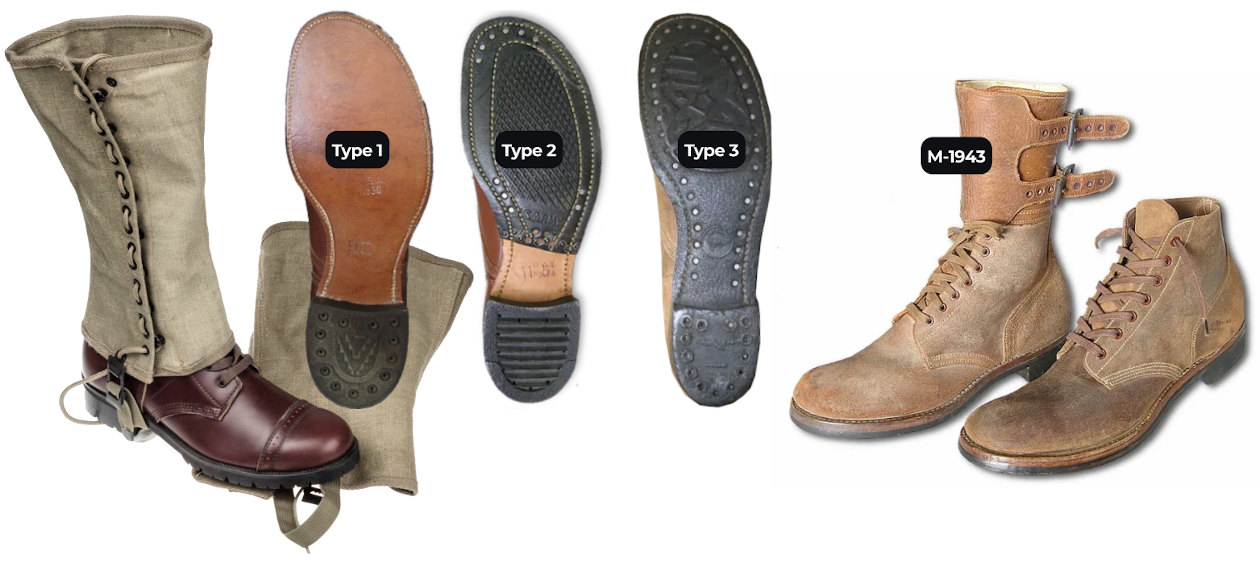
WWII US army boots
As a result of practical experiments that touched on everything - from materials to types of lacing, shoes began to take on the look we were used to. Engineers not only comprehended the truth in their practice, they actively studied the experience of other countries. For example, many nuances were learned from the German troops. Beneficial were the boots used by the Nazi paratroopers.
These experiments culminated in the legendary Jungle boots, based on which Okinawa Boots were created in the 50s, which were field-tested during the Korean campaign. At the same time, the Vibram outsole was designed, which has very well proven itself in the future.
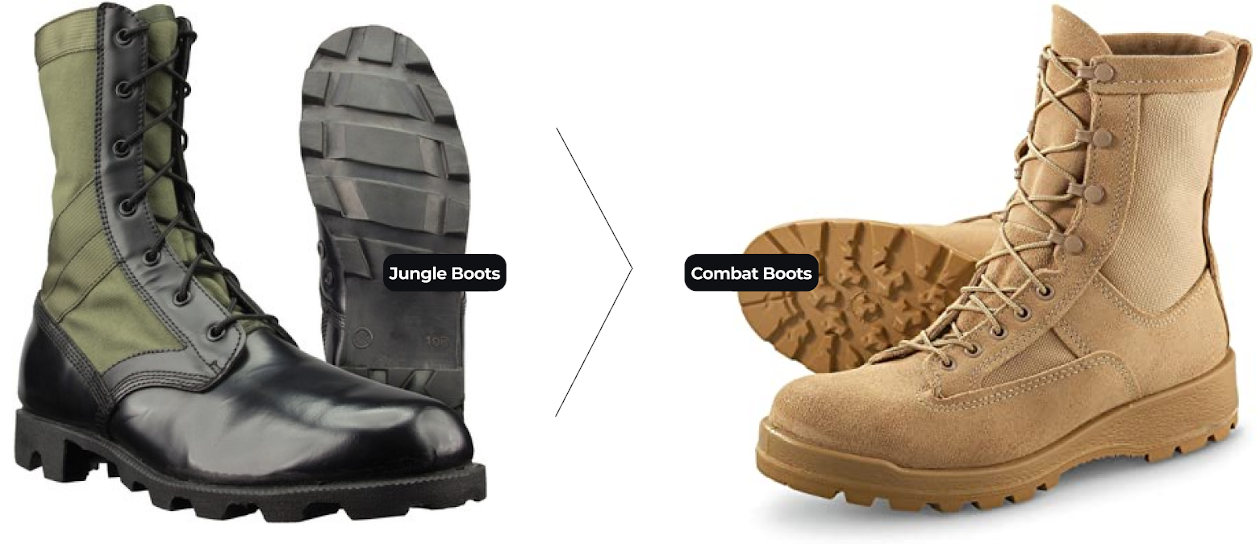
Jungle Boots will remind themselves at the beginning of the Vietnam campaign, although these were boots of a different design with Panama soles. During this time, this item of clothing acquired a cult status. In 1967, the development will lead to the appearance of the Combat model, which in 1984 will enter its second iteration.
As a result, Combat boots and Jungle boots became the basis for all subsequent US footwear. The army constantly set higher standards, and manufacturers responded with innovative solutions and materials. That is why today's shoes of a US Army soldier are not just something that they put on their feet. They are the quintessence of reliability and convenience, which has a cult status in all layers of society.
In addition, I would like to recall the things that protect one of the most vulnerable sense organs of a soldier - eyewear. They are designed to protect the eyes from ultraviolet radiation, dust, sand, and, of course, from splinters and impacts.
There are many modifications and options for goggles, but all of them must meet the requirements of the following high standards: U.S. military standard (MIL-PRF-31013) and U.S. civilian standard (ANSI Z87.1 - 2010). In addition, they correlate with the requirements adopted in Europe - the European standard (EN166, 169, 170 & 172).
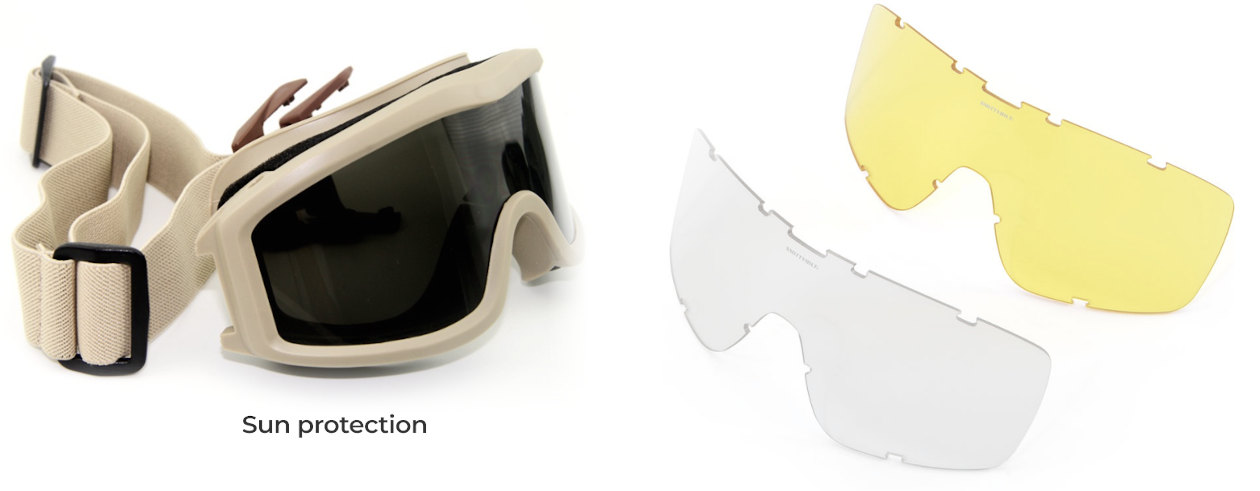
The development of this military accessory began at the end of the 19th century and continues today. Modern ballistic eyewear may include interchangeable lenses, a built-in communication headset, and other options.
We have touched upon the essential elements of the US fighter's outfit. We deliberately do not touch upon the topic of the soldier's weapons, both primary and secondary, because this topic is so ambitious that it deserves a separate text, like the history of this weapon. But, a few pieces of equipment do not fall under our classification, but we would like to talk about them.
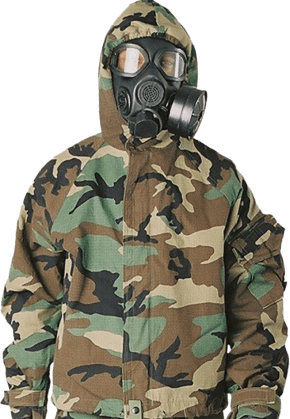
The JSLIST chemical and biological protection suit is used by all divisions and aims to ensure a soldier's safety when performing tasks in an area of particular physical and chemical risk. It's lightweight, slips over your standard military uniform, and weighs just 7 lbs. In addition to the standard set of unique clothing, consisting of a jacket, gloves, boots, and pants, the JSLIST includes the main thing - the M40 gas mask. It is a lightweight, reliable and adaptive gas mask that can reliably protect a soldier.
Also, remember the IRS - a camouflage set of cape and pants made of a special membrane, water-repellent fabric. The particular cut of the suit allows you to put it on without removing your boots, which is a tropical rainstorm looks simply priceless. The advantages of the IRS include its lightweight and the fact that, even when wearing this suit, you can be identified by a waterproof nameplate on the chest.
The equipment of a soldier of the American army is technologically advanced, thought out, and gives a chance in any conditions. It was the result of experience, research, and practical observation. You can talk about it for a long time because there are so many nuances in each element that this information will take more than one book. We have only scratched the surface of this topic in our series of articles. Indeed, large-scale updates occur in the army every three to four years, and small changes never stop.
But, all this will be tomorrow. Today, let's take a closer look at the details of the current equipment of a modern soldier.
Table of contents